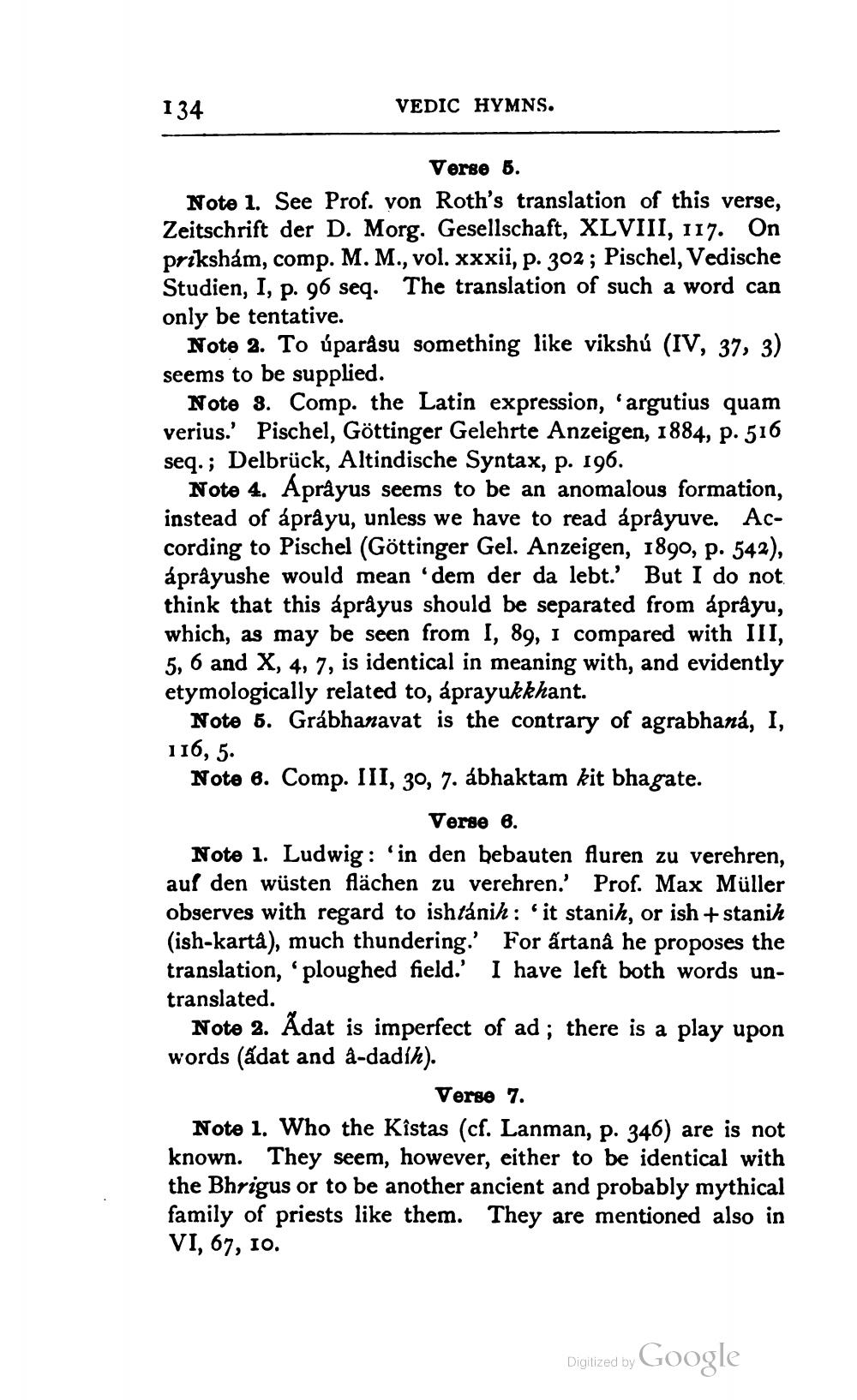________________
134
VEDIC HYMNS.
Verse 6. Note 1. See Prof. von Roth's translation of this verse, Zeitschrift der D. Morg. Gesellschaft, XLVIII, 117. On prikshám, comp. M.M., vol. xxxii, p. 302 ; Pischel, Vedische Studien, I, p. 96 seq. The translation of such a word can only be tentative.
Note 2. To úparâsu something like vikshú (IV, 37, 3) seems to be supplied.
Note 8. Comp. the Latin expression, 'argutius quam verius.' Pischel, Göttinger Gelehrte Anzeigen, 1884, p. 516 seq.; Delbrück, Altindische Syntax, p. 196.
Note 4. Apråyus seems to be an anomalous formation, instead of áprayu, unless we have to read áprayuve. According to Pischel (Göttinger Gel. Anzeigen, 1890, p. 542), ápråyushe would mean 'dem der da lebt.' But I do not think that this ápråyus should be separated from áprayu, which, as may be seen from I, 89, i compared with III, 5, 6 and X, 4, 7, is identical in meaning with, and evidently etymologically related to, áprayukkhant.
Note 5. Grábhanavat is the contrary of agrabhana, I, 116,5. Note 8. Comp. III, 30, 7. ábhaktam kit bhagate.
Verse 6. Note 1. Ludwig : 'in den bebauten fluren zu verehren, auf den wüsten flächen zu verehren.' Prof. Max Müller observes with regard to ishtánih: 'it stanih, or ish + stanih (ish-karta), much thundering. For ártanâ he proposes the translation, 'ploughed field.' I have left both words untranslated.
Note 2. Adat is imperfect of ad ; there is a play upon words (ádat and a-dadih).
Verse 7. Note 1. Who the Kistas (cf. Lanman, p. 346) are is not known. They seem, however, either to be identical with the Bhrigus or to be another ancient and probably mythical family of priests like them. They are mentioned also in VI, 67, 10.
Digitized by Google




